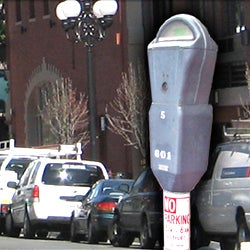21st Century Approach to CIP Streamlining and Transparency

The City of San Diego?s Capital Improvement Projects impact every aspect of life from the drinking water, to the streets and traffic signals, to the beautiful beaches, bays and parks for which San Diego is known. The City of San Diego?s Capital Improvements Program (CIP) has a $214.9 million adopted budget for fiscal year 2013. Quite simply, the City?s CIP is massive. With a portfolio this size, there are many competing priorities and challenges of managing the demands of various stakeholders.
?The City has recently adopted an unprecedented transformation in streamlining and transparency measures that will bring our city government closer to the people and put more information at the fingertips of the public,? said Tony Heinrichs, the Public Works Director. ?These reforms represent a 21st Century common sense approach to transparency and a more authentic way of managing the CIP,? said Heinrichs.
These transparency efforts include a new comprehensive CIP website which provides information on everything there is to know about the City?s CIP. This new website makes project information available online. The public can now track the progress of all active construction projects managed by the City. The new website also offers direct access to information about upcoming construction projects and much more.
In addition to the new website, the City is blazing a trail with the Multiple Awards Construction Contract (MACC), a new and innovative contract delivery method. With such an extensive portfolio and so many asset types, there are many contracting opportunities. The City has more than $300 million in upcoming bid opportunities during the 2013 fiscal year. The MACC delivery method makes it easier to deliver these CIP projects more timely.
Features of the MACC that make it appealing to the construction industry include:
- A single solicitation that may result in award to multiple contractors
- Use of the two-phase Design-Build selection procedures
- Selection of a contractor through competitive Requests for Proposals (RFP) from the pre-approved MACC contractors and award of project task orders on a best value basis.
?We are confident that a the reorganization and consolidation of the management functions related to the oversight of public works as well as streamlining the contracting process will provide services in the most efficient manner possible,? said a City spokesperson.
Many of the City?s capital projects address the deferred maintenance needs of City assets. For example, the City has an aggressive program to replace and rehabilitate its aging water and sewer pipeline systems. Over the last few years, the City has replaced 81 miles of water lines and repla/ced/rehabilitated 250 miles of sewer lines. This is significant as this will help to mitigate future water main breaks, sewer spills, and the associated inconveniences.
In addition to the work on the water and sewer systems, the City took out a $103 million bond in 2010 that has allowed it to undertake major construction work to recapitalize street pavement, storm drains, buildings, sidewalks, and other City infrastructure that either is beyond its useful service life or requires major repairs. The current five year forecast includes approximately $75-$80 million deferred capital bond offerings to continue the work of improving City wide infrastructure assets.
?We understand this is much needed work for the construction industry and how happy the industry is to see these projects come to fruition,? said James Nagelvoort, the City?s Engineer and Assistant Director of the Public Works Department, which manages the City?s capital improvement projects portfolio.























